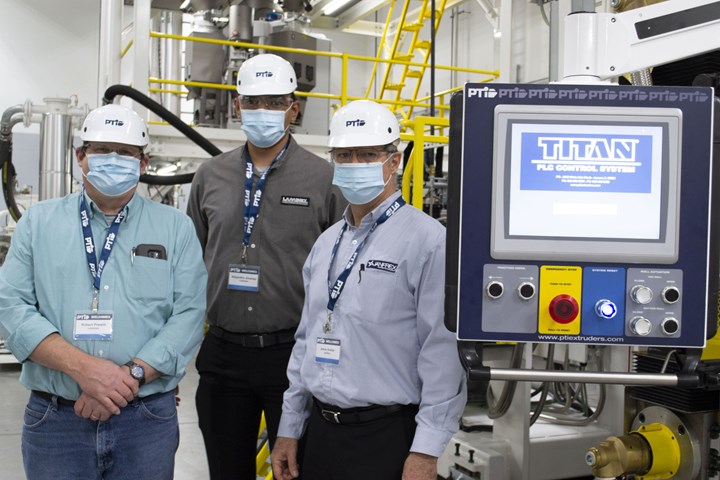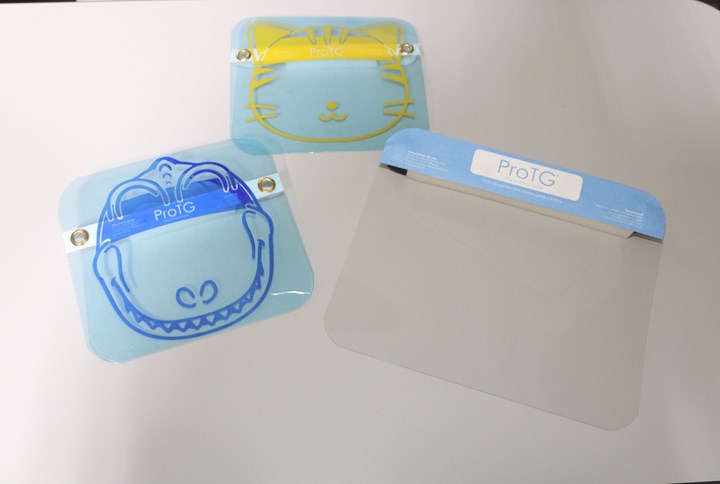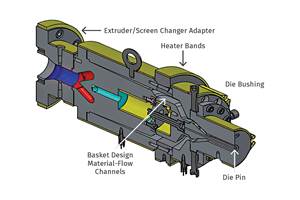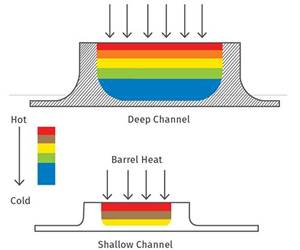Sheet Processor Adds Capacity in Coronavirus Fight
Laminex is venturing into APET for first time to make PPE in Mexico, after purchasing one of PTi’s demo production lines. The turnkey system will ultimately be used by Laminex for its packaging products.
The global Coronavirus pandemic last month brought one of Mexico’s leading sheet processors to Aurora, Ill., to buy a new extrusion line. (Laminex) made the trip to Processing Technologies International (PTi) to buy one of the machine builder’s demonstration sheet extrusion lines right off the floor of its Technology Development Center. Laminex will use the new line initially to make personal protection equipment (PPE) for face shields and screening at one of its plants in Guadalajara, Mexico.
The line, which is expected to be fully operational by the end of July, will then be transitioned to support Laminex’s activities in supplying sheet to a wide range of industries, including packaging, automotive, point-of-purchase displays, refrigeration and construction.

Who are those masked men? To battle against COVID-19, sheet processor Laminex has bought a new PET sheet line from PTi that will at first make PPE. Pictured l-r are Robert Prewitt, plant manager for Laminex’s Texas facility, Alejandro Jimenez, plant manager, Laminex, Mexico; and Jesus Avelar, PTi sales representative.
At the heart of the system Laminex bought is a 85-mm, 52:1 L/D HVTSE (high- vacuum twin-screw extruder), which PTi furnishes through a long-time agreement with Italy’s Luigi Bandera. The line will also be equipped with PTi’s G-Series GSVD661824 sheet takeoff unit and ACW6640/2 dual-position differential shaft-winding system. It offers an output capacity of 2200 lb/hr. The line is also equipped with a Nordson die and a Doteco feeding system.
“We don’t need a dryer and crystallizer, so that saved us money, cuts down on maintenance and improves the overall efficiency of our process.”
Laminex was founded in 1993, and starting by running PS sheet for the printing industry. Over the years it expanded its product line to include PE, PS, PP, ABS, PETG and hollow PP sheet. With the PTi HVTSE DryerLess system, Laminex will be running APET sheet for the first time. “We see a growing need for APET sheet in the Mexican market,” says Robert Prewitt, plant manager for Laminex’s 25,000 ft2 facility in Mansfield, Tex. “And we are looking to grow with the market.”
A wide range of resins can be run on the HVTSE system without the need for screw changes, which Laminex considers ideal since its runs a handful of different materials in its day-to-day operations. The processor also found appealing the fact it’s unnecessary to pretreat (crystallize and dry) material; instead, a high-vacuum system removes moisture up to 12000+ ppm. This technology also allows processing up to 100% regrind, a critical component for energy savings and recycling. “We were impressed with the technology,” Prewitt notes. “We don’t need a dryer and crystallizer, so that saved us money, cuts down on maintenance and improves the overall efficiency of our process.” Prewitt says Laminex will be running sheet in thicknesses from 20-30 mils.

Laminex will make face shields and screens from its PTi HVTSE DryerLess system, then APET sheet for packaging and other applications.
The line Laminex bought was one of two demonstration lines running in the PTi TDC facility, the second of which is a Super G HighSpeed Model 3000-36D (75-mm) system with an output capacity for PP of up to 2500 lb/hr.
PTi is currently in the advanced stages of building a demo production line that will replace the one Laminex bought. Matt Banach, PTI’s v.p. of sales and marketing, says it will be their next generation MultiResn DryerLess technology plus a J-roll stack with auxiliary cooling rolls, edge-trim-recovery system, and a range of other components. PTi says the TDC permits customers to conduct sheet extrusion trials on a brand-new, full-scale production equipment, often using their own materials to demonstrate the overall equipment performance and related features.

Related Content
How to Select the Right Tooling for Pipe Extrusion
In pipe extrusion, selecting or building a complementary set of tooling often poses challenges due to a range of qualitative factors. Here’s some guidance to help you out.
Read MoreMedical Tubing: Use Simulation to Troubleshoot, Optimize Processing & Dies
Extrusion simulations can be useful in anticipating issues and running “what-if” scenarios to size extruders and design dies for extrusion projects. It should be used at early stages of any project to avoid trial and error and remaking tooling.
Read MorePart 2 Medical Tubing: Use Simulation to Troubleshoot, Optimize Processing & Dies
Simulation can determine whether a die has regions of low shear rate and shear stress on the metal surface where the polymer would ultimately degrade, and can help processors design dies better suited for their projects.
Read MoreThe Importance of Barrel Heat and Melt Temperature
Barrel temperature may impact melting in the case of very small extruders running very slowly. Otherwise, melting is mainly the result of shear heating of the polymer.
Read MoreRead Next
Lead the Conversation, Change the Conversation
Coverage of single-use plastics can be both misleading and demoralizing. Here are 10 tips for changing the perception of the plastics industry at your company and in your community.
Read MoreSee Recyclers Close the Loop on Trade Show Production Scrap at NPE2024
A collaboration between show organizer PLASTICS, recycler CPR and size reduction experts WEIMA and Conair recovered and recycled all production scrap at NPE2024.
Read More












